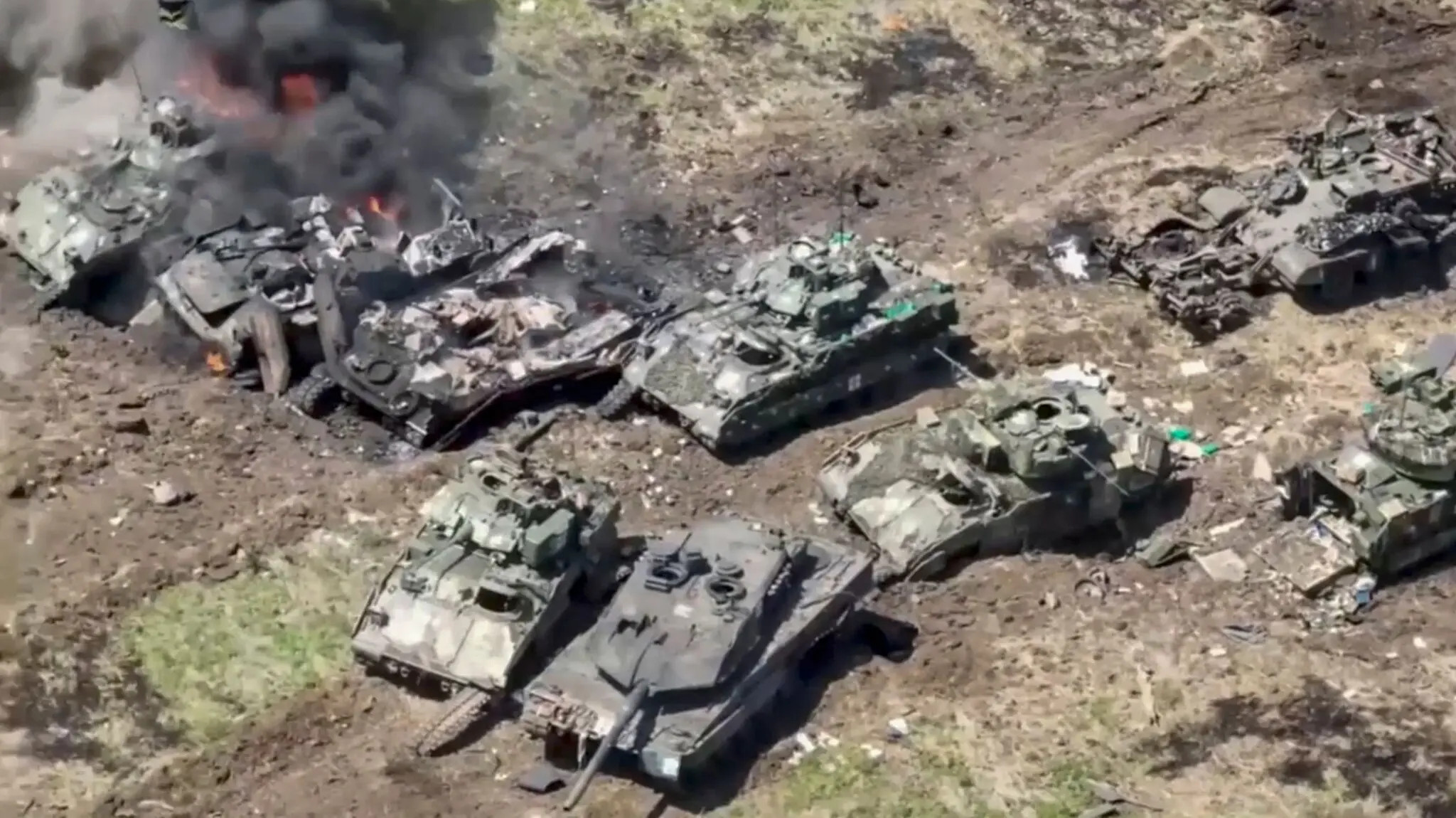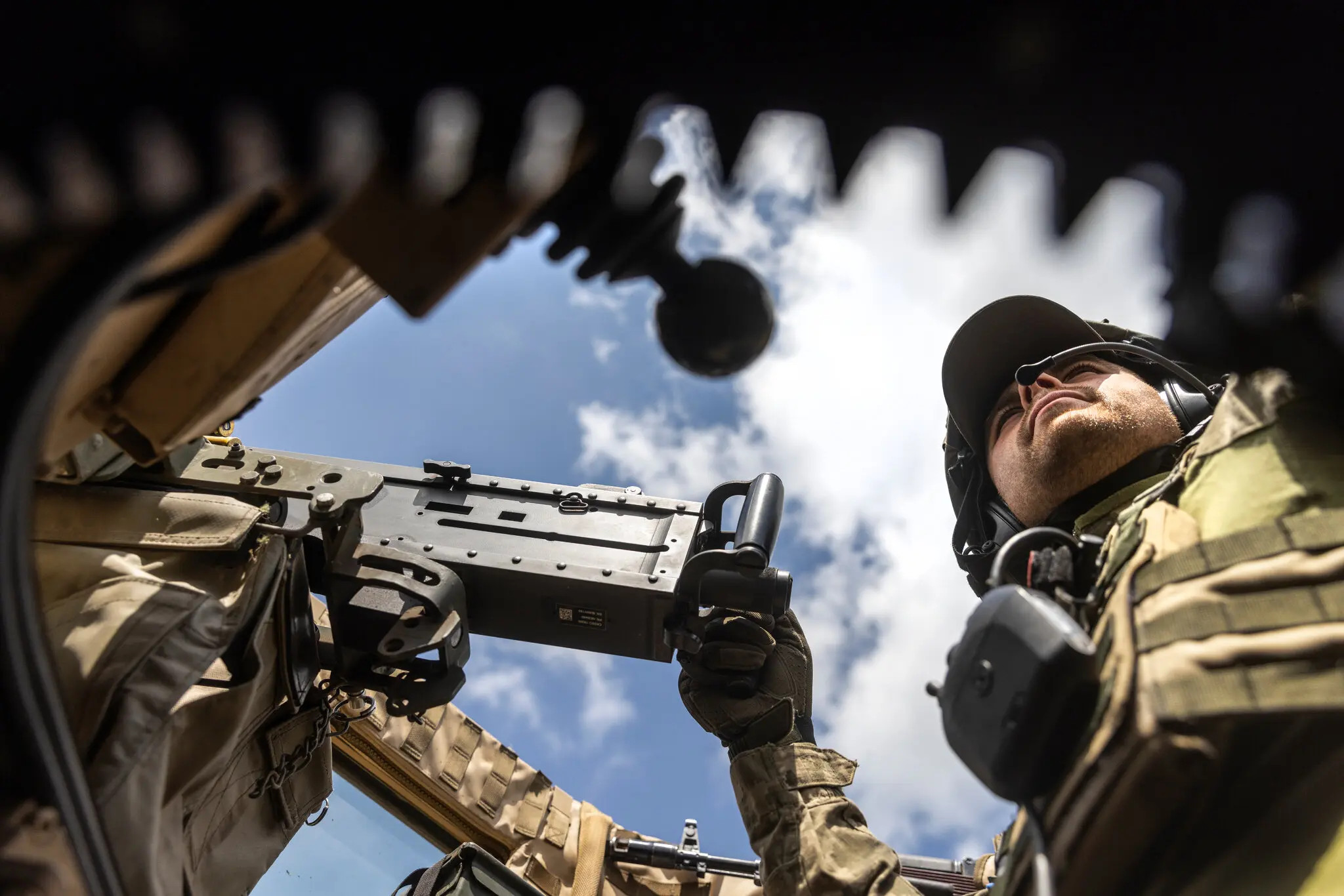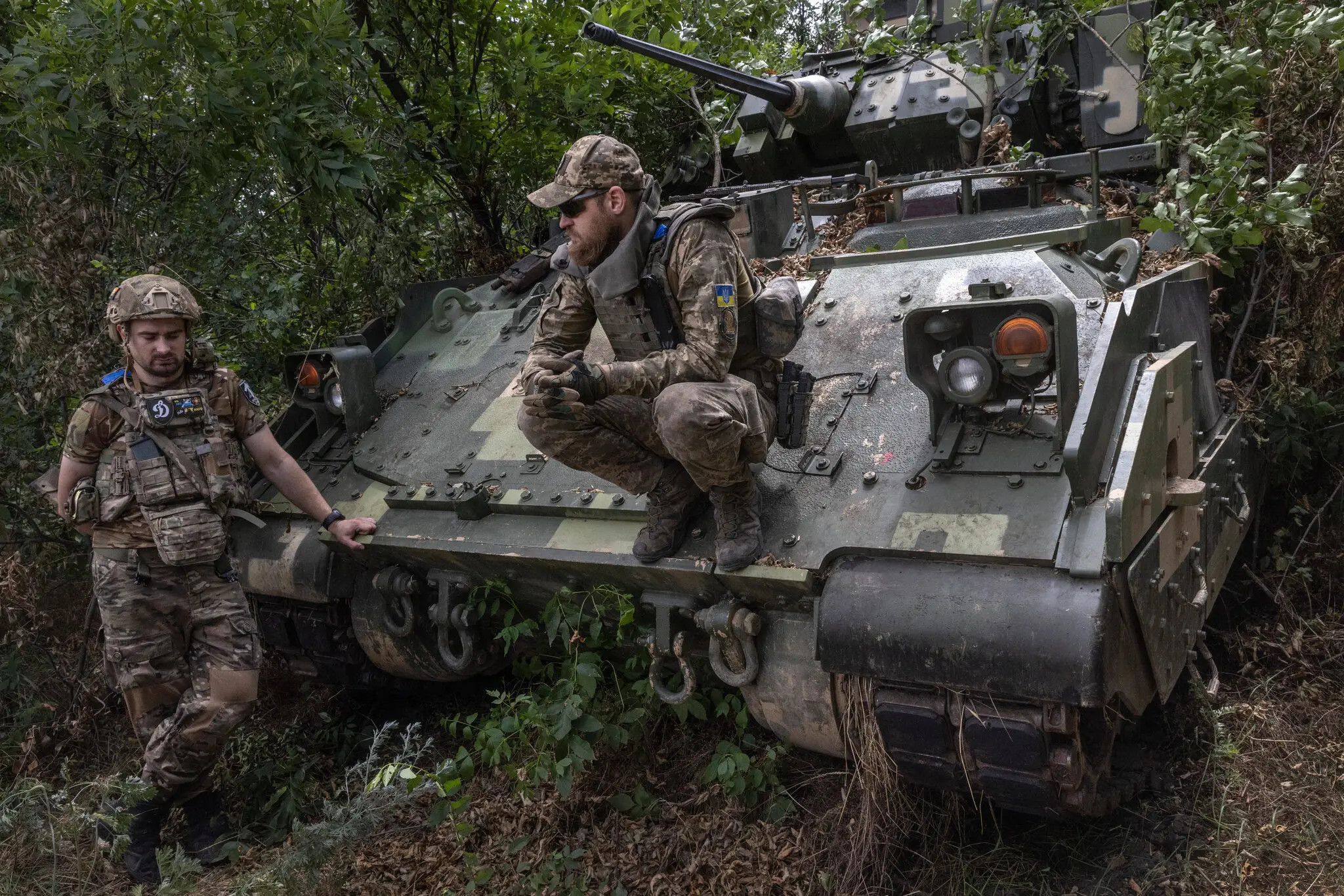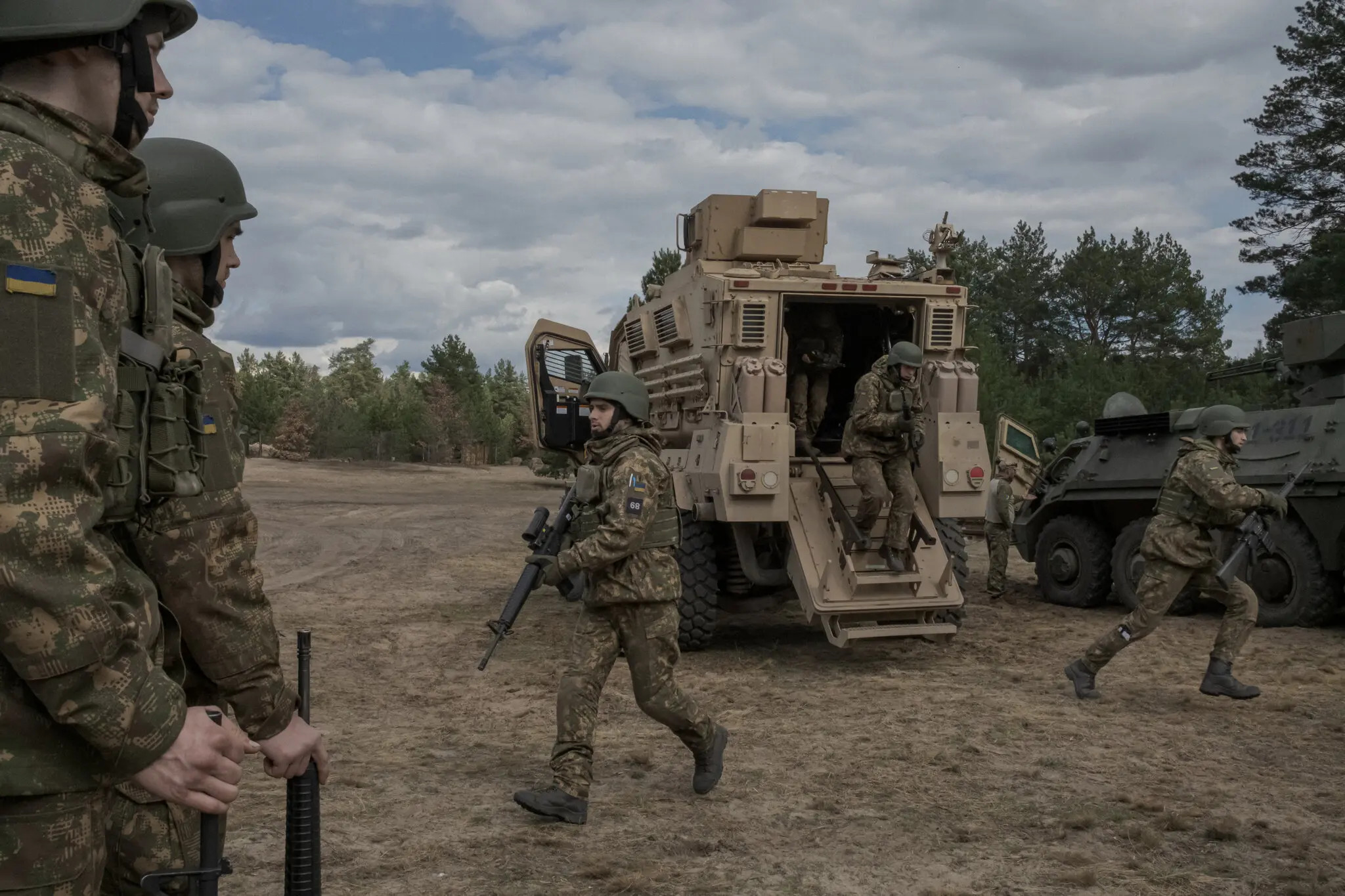After Suffering Heavy Losses, Ukrainians Paused to Rethink Strategy
Early in the counteroffensive, Ukraine lost as much as 20 percent of its weapons and armor. The rate dropped as the campaign slowed and commanders shifted tactics.
Lara JakesAndrew E. KramerEric Schmitt
By Lara Jakes, Andrew E. Kramer and Eric Schmitt
Lara Jakes reported from Rome, Eric Schmitt from Washington and Andrew E. Kramer from Zaporizhzhia, Ukraine.
July 15, 2023
In the first two weeks of Ukraine’s grueling counteroffensive, as much as 20 percent of the weaponry it sent to the battlefield was damaged or destroyed, according to American and European officials. The toll includes some of the formidable Western fighting machines — tanks and armored personnel carriers — the Ukrainians were counting on to beat back the Russians.
The startling rate of losses dropped to about 10 percent in the ensuing weeks, the officials said, preserving more of the troops and machines needed for the major offensive push that the Ukrainians say is still to come.
Some of the improvement came because Ukraine changed tactics, focusing more on wearing down the Russian forces with artillery and long-range missiles than charging into enemy minefields and fire.
But that good news obscures some grim realities. The losses have also slowed because the counteroffensive itself has slowed — and even halted in places — as Ukrainian soldiers struggle against Russia’s formidable defenses. And despite the losses, the Ukrainians have so far taken just five of the 60 miles they hope to cover to reach the sea in the south and split the Russian forces in two.
One Ukrainian soldier said in an interview this week that his unit’s drone picked up footage of a half-dozen Western armored vehicles caught in an artillery barrage south of the town of Velyka Novosilka.
“They all burned,” said the soldier, who identified himself as Sgt. Igor. “Everybody is hoping for a big breakthrough,” he said, adding a plea that those scrutinizing from afar appreciate the importance of slow and steady advances.
Russia had many months to prepare for the counteroffensive, and the front is littered with mines, tank traps and dug-in troops, while Russian reconnaissance drones and attack helicopters fly overhead with increasing frequency.
Given those fortifications, experts say, it is not surprising that Ukraine would sustain relatively severe losses in the early stages of the campaign.

Damaged tanks and vehicles on a muddy ground. Fire and smoke can be seen on the left.
A photograph released by the Russian Defense Ministry reportedly showing destroyed Bradley vehicles
and Leopard tanks in Ukraine’s Zaporizhzhia region.Credit...Russian Defense Ministry, via Shutterstock
This week, Ukraine’s president, Volodymyr Zelensky, acknowledged that there had been a brief pause in operations some weeks ago but blamed it on a lack of equipment and munitions, and called on Western allies to quicken the pace of deliveries.
American officials acknowledged that pause and said that the Ukrainians had begun moving again, but more deliberately, more adept at navigating minefields and mindful of the casualty risks. With the influx of cluster munitions from the United States, they said, the pace might pick up.
The State of the War
Black Sea Grain Deal: Russia said that it was ending its participation in an agreement that had allowed Ukraine to export its grain by sea despite Moscow’s naval blockade, upending a deal that had helped to keep global food prices stable and alleviate one element of the fallout from the war.
Crimean Bridge Attack: Predawn explosions hit the only bridge linking the occupied Crimean Peninsula to mainland Russia, damaging a vital symbol of President Vladimir Putin’s claims to sovereignty over Ukrainian territory and briefly disrupting a major supply line to Russian troops.
Counteroffensive: Early in the campaign, Ukraine lost as much as 20% of its weapons and armor. The rate dropped as the campaign slowed and commanders shifted tactics. But that improvement also hides some grim realities.
A Minefield: Interviews with commanders and soldiers fighting along the front indicate the slow progress in the counteroffensive comes down to one major problem: Russian land mines.
“It’s not as fast, but it’s not catastrophically behind schedule,” the British defense minister, Ben Wallace, said on Wednesday. “It is doing what anyone else would do having to fight through minefields towards the Russian line.”
The problems come into focus out in the farm fields in southern Ukraine where much of the counteroffensive is being fought. There the Bradley Fighting Vehicles, long coveted by the Ukrainians, have been running over anti-tank mines on a daily basis, soldiers who have fought in the vehicles say.
The vehicles, which weigh about 34 tons, are designed to carry infantry soldiers through areas exposed to gunfire or artillery. A rear ramp opens to allow soldiers to pile out and fight. In planning for the counteroffensive, the Bradleys were meant to carry soldiers across open fields to reach Russian trenches and bunkers.
Editors’ Picks
What a ‘Human-Centered’ Approach Can Do for Workers With Disabilities
‘Barbie’ Review: Out of the Box and On the Road
This Barbie Is Now on Strike
SKIP ADVERTISEMENT
The Bradleys have done part of their job well; their thick armor has provided good protection for most soldiers, who have survived many of the mine blasts with few injuries.
“Your ears ring and things inside fly around,” said one soldier, who asked to be identified only by his first name and rank, Pvt. Serhiy. He survived such an explosion last month in fighting south of the town of Orikhiv in the Zaporizhzhia region. But in many cases the blasts severely damaged the vehicles, immobilizing them well before they could reach the Russian lines.

A man in military attire with a heavy gun.
A soldier from Ukraine’s 68th Brigade with a heavy machine gun in the turret
of a U.S.-made armored vehicle.Credit...David Guttenfelder for The New York Times
Military experts have long said that the first 15 miles of the counteroffensive would be the hardest, as attacking troops generally need three times more power — whether in weapons, personnel or both — than defending forces.
Ukraine’s top military officer, Gen. Valery Zaluzhny, expressed frustration that Ukraine is fighting without Western F-16 warplanes, which the United States only recently agreed to allow Ukrainian pilots to be trained on, but which are not expected to be delivered for several months at least. That has left the Ukrainian troops vulnerable to the Russian helicopters and artillery.
Military analysts cautioned that it was still too early to draw definitive conclusions about the counteroffensive. “It does not mean that it is doomed to fail,” said Camille Grand, a defense expert at the European Council on Foreign Relations and a former NATO assistant secretary general.
Nevertheless, he added, the absence of air superiority and air defenses that Western jets could provide for Ukraine’s attack means “that casualty rates are likely to be higher than in other conventional conflicts.”
The precise numbers of weapons and armored vehicles that have been destroyed in the counteroffensive, as opposed to “mobility kills” that can be repaired, are closely guarded secrets, and the U.S. officials did not give raw numbers, though they did agree on the percentages of weaponry lost. But a combination of open source data and official estimates can provide a snapshot in time of the destruction, particularly in the early going.
Ukraine’s 47th Mechanized Brigade, one of the three Western-equipped and trained units that were deployed early in the campaign, was set to receive 99 Bradleys, according to the leaked U.S. military plans for the counteroffensive from February — still the most recent that have been made public.
Data from Oryx, a military analysis site that counts only losses that it has visually confirmed, show that 28 of those Bradleys have been abandoned, damaged or destroyed, including 15 in a village in Zaporizhzhia Province on June 8 and 9 as the 47th was attacked by helicopters while trapped in a minefield. Six additional Bradleys were reported abandoned or destroyed in Mala Tokmachka on June 26, but Oryx researchers said these losses had occurred earlier, although it is not clear exactly when.

Men in military attire near an armored fighting vehicle in a forested area.
Ukrainian soldiers with a Bradley Fighting Vehicle in the Zaporizhzhia region.
Credit...David Guttenfelder for The New York Times
Given that the 47th was the only brigade initially slated to receive the Bradleys, that means that nearly one-third of the original vehicles have been lost — although all but seven of them were blown up at one battleground.
“It is within the realm of possibility that Ukrainian forces have seen losses at this level,” said Dylan Lee Lehrke, an analyst with the British security intelligence firm Janes, adding that a “significant” level of lost weapons was generally a hallmark of wars of attrition, like the one in Ukraine.
The Oryx data show that only 24 tanks were lost for the entire month of June, including some from Ukraine’s own arsenal in addition to those supplied by Western allies.
Ten of them were German-made Leopard tanks and mine-clearers, the data show. Presumably, they were lost in battle with Ukraine’s 33rd Mechanized Brigade, one of the three units deployed early in the counteroffensive, and which was slated to receive 32 Leopards in the U.S. planning documents from Feb. 28.
That would mean that the brigade lost 30 percent of the Leopards it was given — all but two of them in the first week of fighting, the Oryx data show.
The Ukrainian authorities say the army has so far advanced the deepest in southern areas of the Donetsk region, but no more than about five miles from the former front line at Velyka Novosilka. It faces another 55 miles to reach the Sea of Azov, a primary goal of the counteroffensive, as it would cut the land bridge to Crimea, wreaking havoc with Russia’s already shaky logistics. Ukraine’s forces are also advancing in two areas in the Zaporizhzhia region.
It is even slower near Orikhiv in the Zaporizhzhia region, where the bulk of Bradleys and Leopards have been sent to an area of open fields with little cover. There, Ukraine’s army has advanced only about a mile.
Justin Scheck contributed reporting from London.
Lara Jakes is a foreign correspondent focused on the war in Ukraine. She has been a diplomatic and military correspondent in Washington and a war correspondent in Iraq, and has reported and edited from more than 60 countries over the last 25 years. More about Lara Jakes
Andrew E. Kramer is the Times bureau chief in Kyiv. He was part of a team that won the 2017 Pulitzer Prize in International Reporting for a series on Russia’s covert projection of power. More about Andrew E. Kramer
Eric Schmitt is a senior writer who has traveled the world covering terrorism and national security. He was also the Pentagon correspondent. A member of the Times staff since 1983, he has shared four Pulitzer Prizes. More about Eric Schmitt
A version of this article appears in print on July 17, 2023, Section A, Page 8 of the New York edition with the headline: After Heavy Losses, Ukrainians Paused To Rethink Strategy. Order Reprints | Today’s Paper | Subscribe
Give this article
Our Coverage of the War in Ukraine
The Future of Ukraine: The European Union and NATO have promised a path to membership for the country. But real partnership will hold risks and benefits.
Photos: Photographers with The New York Times and other news organizations have been chronicling the war, capturing a slice of how soldiers and civilians have experienced it. Our photographers say some images will never leave them.
Western Companies: Hundreds of Western businesses are still in Russia. Some say Moscow has tied their hands, while others have chosen to stay put.
Defying Isolation: After the invasion of Ukraine, the West tried to cut Russia off from the rest of the world. But wealthy Russians continue to rely on a network of middlemen to circumvent the restrictions.
A Wartime Partnership: The alliance between President Biden and President Volodymyr Zelensky of Ukraine has become critical to the world order.
Zelensky’s Rise: The Ukrainian president, once brushed off as a political lightweight, has become a household name, representing his country’s tenacity.
How We Verify Our Reporting
Our team of visual journalists analyzes satellite images, photographs, videos and radio transmissions to independently confirm troop movements and other details.
We monitor and authenticate reports on social media, corroborating these with eyewitness accounts and interviews. Read more about our reporting efforts.
More in Politics
| |



 A man in military attire with a heavy gun.
A man in military attire with a heavy gun.